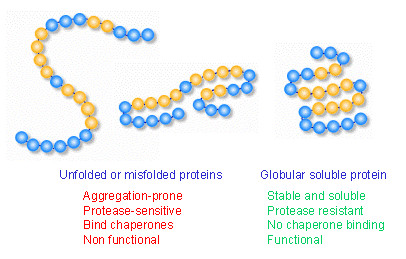Proteins can often be folded into their native form, which helps determine several chemical, physical, and biological properties. These folded proteins are so small that they can actually diffuse or rotate. Proteins have a huge variety of solubility inside of different solutions.
Cytoplasmic proteins have about a 35 % in an aqueous solution. Structural proteins are basically insoluble along with proteins that are present in membranes. The solubility of a protein in water is determined by its free energy when surrounded by aqueous solvent relative to in amorphous or solid conditions.
Protein molecules have a lot of interactions with their solvents. These interactions are primarily determined by the solution's surface. There are a lot of favorable interactions with water caused by charged and polar groups in protein chains. The solubility of a globular protein increases as the pH value of the solution mixture goes further and further from the normal pH. If a protein is not very soluble, detergents can be put into the solutions in order to make the proteins unfold.
Proteins in an aqueous solution are tightly bounded by a hydration layer. This hydration layer is more bounded with less mobile that is found in bulk water. It has a 10 % greater density and 15 % greater heat capacity. The interactions between the solvent water and the solute, protein would occur in the charged groups on the surface of the protein, the polar groups on the surface of the protein, and the monolayer around the protein molecule.
Instead of using a detergent, another way of increasing the solubility of a protein would be to increase the ionic strength at low values. This is also known as "salting-in". At higher salt concentrations, the solubility level of a protein would decrease; another way of saying this would be "salt-out". To increase the surface tension of the salt, then the added salt must go up. The higher the surface tension of the salt, the higher the IMF. Therefore, in water, it would be more polar, resulting in a more soluble solution.


No comments:
Post a Comment